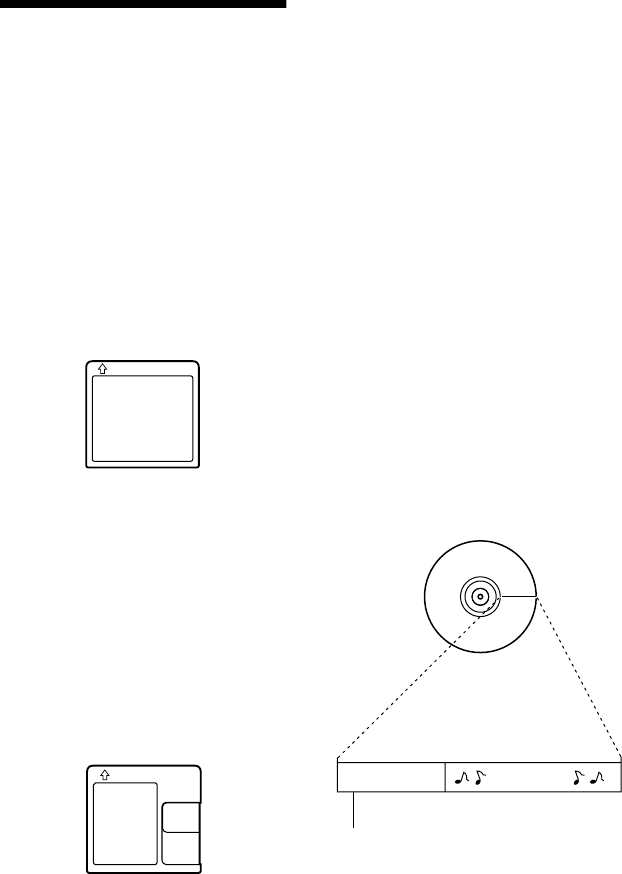
41-GB
What is an MD?
How MiniDisc works
MiniDisc (MD) comes in two types:
premastered (prerecorded) and recordable
(blank). Premastered MDs, recorded at
music studios, can be played back almost
endlessly. However, they can’t be recorded
on or over like cassette tapes. To record, you
must use a “recordable MD”.
Premastered MDs
Premastered MDs are recorded and played
like regular CDs. A laser beam focuses on
the pits in the surface of the MD and reflects
the information back to the lens in the
recorder. The recorder then decodes the
signals and plays them back as music.
Recordable MDs
Recordable MDs, which use magneto-
optical (MO) technology, can be recorded
again and again. The laser inside the
recorder applies heat to the MD,
demagnetizing the magnetic layer of the
MD. The recorder then applies a magnetic
field to the layer. This magnetic field
corresponds exactly to the audio signals
generated by the connected source. (The
north and south polarities equate to digital
“1” and “0”.) The demagnetized MD adopts
the polarity of the magnetic field, resulting
in a recorded MD.
How the MiniDisc got so small
The 2.5-inch MiniDisc, encased in a plastic
cartridge that looks like a 3.5-inch diskette
(see illustration on the left column), uses a
new digital audio compression technology
called ATRAC (Adaptive TRansform
Acoustic Coding). To store more sound in
less space, ATRAC extracts and encodes
only those frequency components actually
audible to the human ear.
Quick Random Access
Like CDs, MDs offer instantaneous random
access to the beginning of any music track.
Premastered MDs are recorded with location
addresses corresponding to each music
selection.
Recordable MDs are manufactured with a
“User TOC Area” to contain the order of the
music. The TOC (Table of Contents) system
is similar to the “directory management
system” of floppy disks. In other words,
starting and ending addresses for all music
tracks recorded on the disc are stored in this
area. This lets you randomly access the
beginning of any track as soon as you enter
the track number (AMS), as well as label the
location with a track name as you would a
file on a diskette.
User TOC Area
Music Data
Contains the order and start/end
points of the music.


















